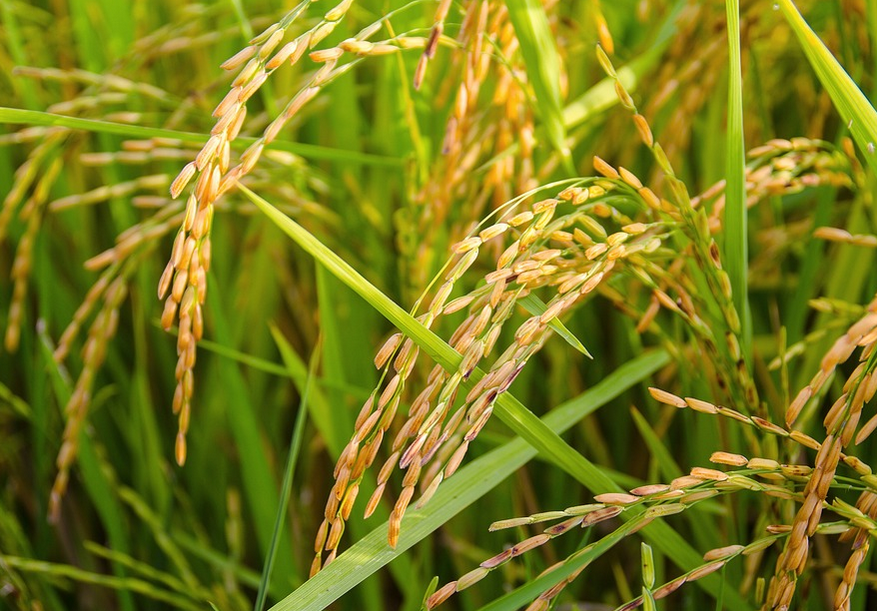Weeds under two conditions of irrigation in culture of the upland rice
DOI:
https://doi.org/10.20873/jbb.uft.cemaf.v3n4.terraKeywords:
dry stress, weeds, dry mass, Oryza sativa L.Abstract
The objective of the work was to evaluate the weeds and dry mass in the culture of the upland rice, under two conditions of irrigation (with and without it dry stress). The experiment was installed in the Experimental Station of the Campus of Gurupi-TO, belonging to the Federal University of Tocantins (UFT). The survey of the weeds was made to the end of the reproductive cycle of the rice plants, by the sampling method, being the same ones, collected to evaluate the dry mass. Among weed families found in the experiment, it was evidenced occurrence of lesser number (8 families) in area with dry stress in relation to the area without stress (9 families). The number of joined species was the same (13 species) in both areas, having variation, according to the culture environment. The species that more detached had been would type Digitariahorizontalis and Emilia sonchifolia for both conditions. The weeds, in the condition of dry stress, tended to present minor dry mass when comparer to those under condition without it stress for water deficiency.
References
Bota, J.; Medrano, H.; Flexas, J. (2004), Is photosynthesis limited by decreased Rubisco activity and RuBP content under progressive water stress. New Phytologist, 62, 671–681.
Carbonell, R.M.; Yanis, A.G.; Rubial, A.G.; Pereiro, G.A.; Sousa, J.G.; Victoria, F.C. (1998), Guía para el trabajo de campo en el manejo integrado de plagas del arroz. Cali: FLAR/CIAT, 55p.
Concenço, G.; Ferreira, E.A.; Silva, A.A.; Ferreira, F.A.; Viana, R.G.; D’antonino, L.; Vargas, L.; Fialho, C.M.T. (2007),Uso da água em biótipos de azevém (Lolium multiflorum) em condição de competição. Planta Daninha, 25, 449-455.
Curtis, J.T. e Mcintosh, R.P. (1950), The interrelations of certain analytic and synthetic phytossociological characters. Ecology,31, 434- 455.
Erasmo, E.A.L.; Costa, N.V.; Pinheiro, L.L.A.; Silva, J.I.C.; Terra, M.A. Sarmento, R.A.; Cunha, A.M.; Garcia, S.L.R.(2003), Efeitos da densidade e dos períodos de convivência de Cyperus esculentus na cultura do arroz irrigado. Planta Daninha, 21, 381-386.
Lorenzi, H. (1994), Manual de identificação e controle de plantas daninhas: plantio direto e convencional. 4.Ed. Nova Odessa: Ed. Plantarium, 299p.
Martins, F.R. Critérios para a avaliação de recursos naturais. (1978), In: Simpósio sobre a comunidade vegetal como unidade biológica, turística e econômica, 1978, São Paulo. Anais... Academia de Ciências do Estado de São Paulo, p. 136-149. (Publicação ACIESP, 15).
Mueller-Dombois, D. e Ellemberg, H. (1974), Aims and methods of vegetation ecology. New York: John Wiley & Sons, 547p.
Nguyen, H.T.; Babu, R.C.; Blum, A. (1997), Breeding for drought resistance in rice: physiology and molecular genetics considerations. Crop Science, 37, 1426-1437.
Paulo, E.D.; Fujwara, M.; Nishida, T. (1990), Controle das plantas daninhas na cultura de alface transplantada com o herbicida oxadiazom. Bragantia, 49, 403-411.
Procópio, S.O.; Santos, J.B.; Silva, A.A.; Donagemma, G.K.; Mendonça, E.S. (2004), Ponto de murcha permanente de soja, feijão e plantas daninhas. Planta Daninha, 22,35-41.
Seagro, Secretaria da Agricultura, Pecuária e do Abastecimento, Condições Ambientais, Governo do Estado do Tocantins, Disponível em: http://www.to.gov.br/seagro/v_menu.php?id=603. Acesso em: 05/02/2007.
Silva, E.F. da; Silva, V.A.C.; Guimarães, J.F. R.; Moura, R. R. de. (2011), Divergência fenotípica entre genótipos de arroz de terras altas. Revista Brasileira de Ciências Agrárias, 6, 280-286.
Silva, M.R.M. Períodos de interferência das plantas daninhas na cultura do arroz de terras altas. Tese (Doutorado em Produção Vegetal) - Universidade Estadual Paulista, Faculdade de Ciências Agrárias e Veterinárias, 2006.
Shinozaki, K. e Yamaguchi-Shinozaki, K. (2007), Gene networks involved in drought stress response and tolerance. Journal of Experimental Botany, 58, 221-227.
Stone, L.F.; Moreira, J.A.A.; Silva, S.C. da.(1986), Tensão da água no solo e produtividade do arroz.Goiânia:Embrapa – Cnpaf, 6p. (Circular Técnico 19).
Taiz, L. e Zeiger, E. (2009), Fisiologia Vegetal.4.Ed. Porto Alegre: Artimed, 819p.
Vidal, M.S.; Carvalho, J.M.F.C.; Meneses, C.H.S.G. (2005), Déficit Hídrico: Aspectos Morfofisiológicos.Campina Grande: Embrapa, 19p. (Documentos 142).
Voll, E.; Adegas, F.S.; Gazziero, D.L.P.; Brighenti, A.M.; Oliveira, M.C.N. de. (2003), Amostragem do banco de semente e flora emergente de plantas daninhas. Pesquisa Agropecuária Brasileira, 38, 211-218.

Published
How to Cite
Issue
Section
License
Copyright (c) 2024 - Journal of Biotechnology and Biodiversity

This work is licensed under a Creative Commons Attribution 4.0 International License.
Authors who publish with this journal agree to the following terms:
Authors retain copyright and grant the journal right of first publication with the work simultaneously licensed under a Creative Commons Attribution License (CC BY 4.0 at http://creativecommons.org/licenses/by/4.0/) that allows others to share the work with an acknowledgement of the work's authorship and initial publication in this journal.
Authors are able to enter into separate, additional contractual arrangements for the non-exclusive distribution of the journal's published version of the work (e.g., post it to an institutional repository or publish it in a book), with an acknowledgement of its initial publication in this journal.
Authors are permitted and encouraged to post their work online (e.g. in institutional repositories or on their website) prior to and during the submission process, as it can lead to productive exchanges, as well as earlier and greater citation of published work (Available at The Effect of Open Access, at http://opcit.eprints.org/oacitation-biblio.html).


